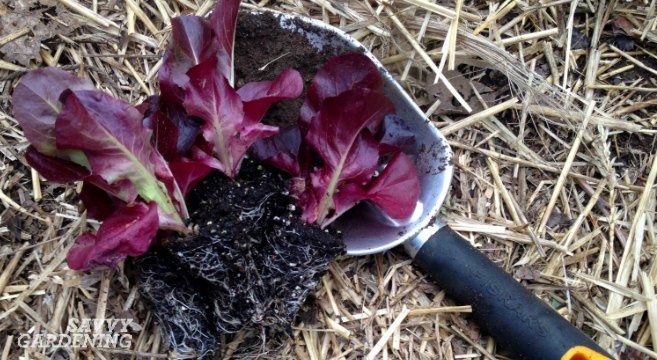This post may contain affiliate links. If you make a purchase through links on our site, we may earn a commission.
Let me get right to the point; you don’t need a big garden to grow more food. Even small space gardeners can boost their yield by practicing a few sneaky techniques like vertical gardening, intensive planting, and companion planting.
Here are 3 ways to grow more food this year:
Grow UP! – There are many benefits to growing food vertically. You’ll save valuable garden space, but you’ll also reduce insect and disease problems and make harvesting a snap – no more stooping, bending, or trying to negotiate your way through a tangle of vines to hunt for hidden veggies. Growing vegetables vertically also allows you to space the plants closer together, resulting in a significant increase in yield.
Best bets including vining crops like indeterminate tomatoes, cucumbers, peas, pole beans, and small fruited squash and melons. Keep in mind that vining crops need a sturdy structure to climb. I like simple-to-build A-frame trellises, as well as arbors, teepees, cucumber trellises, or pea & bean netting that is hung between two 8 foot tall wooden stakes.

Related post: Growing cucumbers vertically
Keep ’em close – Perhaps the easiest way to grow more food is to plant crops close together, an approach called intensive planting. I grew up with a traditional rectangular-shaped vegetable garden, which we planted in long straight rows. These rows were separated by wide pathways, resulting in about half of our potential growing space being given up to walking paths – what were we thinking?
Today, I grow food in raised beds. These offer many advantages (check out Tara’s book, Raised Bed Revolution, for the benefits of raised beds) and every square inch of growing space is covered by a canopy of plants. Plus, the foliage shades the soil, discouraging weed growth and reducing moisture evaporation. For the most efficient use of space, plant seeds or seedlings in a grid formation. But, don’t overcrowd them! You don’t want them to compete for nutrients, sunlight and water. Instead, they should be spaced so that the leaves barely touch as the crop reaches maturity or their harvestable size.

Related post: Four flowers for the veggie garden
Garden BFF’s – This might seem like a strange way to boost yield, but if you include pollinator-friendly flowers and herbs in your veggie garden you will get more bees and beneficial insects. More bees = more pollinated flowers. More pollinated flowers = a larger harvest.
Choose a range of flowers shapes to entice the largest variety of pollinators. Best bets include cosmos, sweet alyssum, sunflowers (not the pollen-less types!), zinnias, nasturtiums, calendula, parsley, and basil (let it flower). No space for flowers? No problem! Plant up a pollinator pot and place it near your edibles.

Are you planning on using any of these techniques to up your veggie garden game in 2017?




I used sweet alyssum in my cucumber bed last summer and picked 70 pounds of cucumbers from six plants. Alyssum works like a charm.
I do all three of these things in my garden and they work great. If I had to pick only one of the three to do, it’d be the flowers for pollinators any day. Every veggie garden should have them. The amount of increased pollination is amazing!